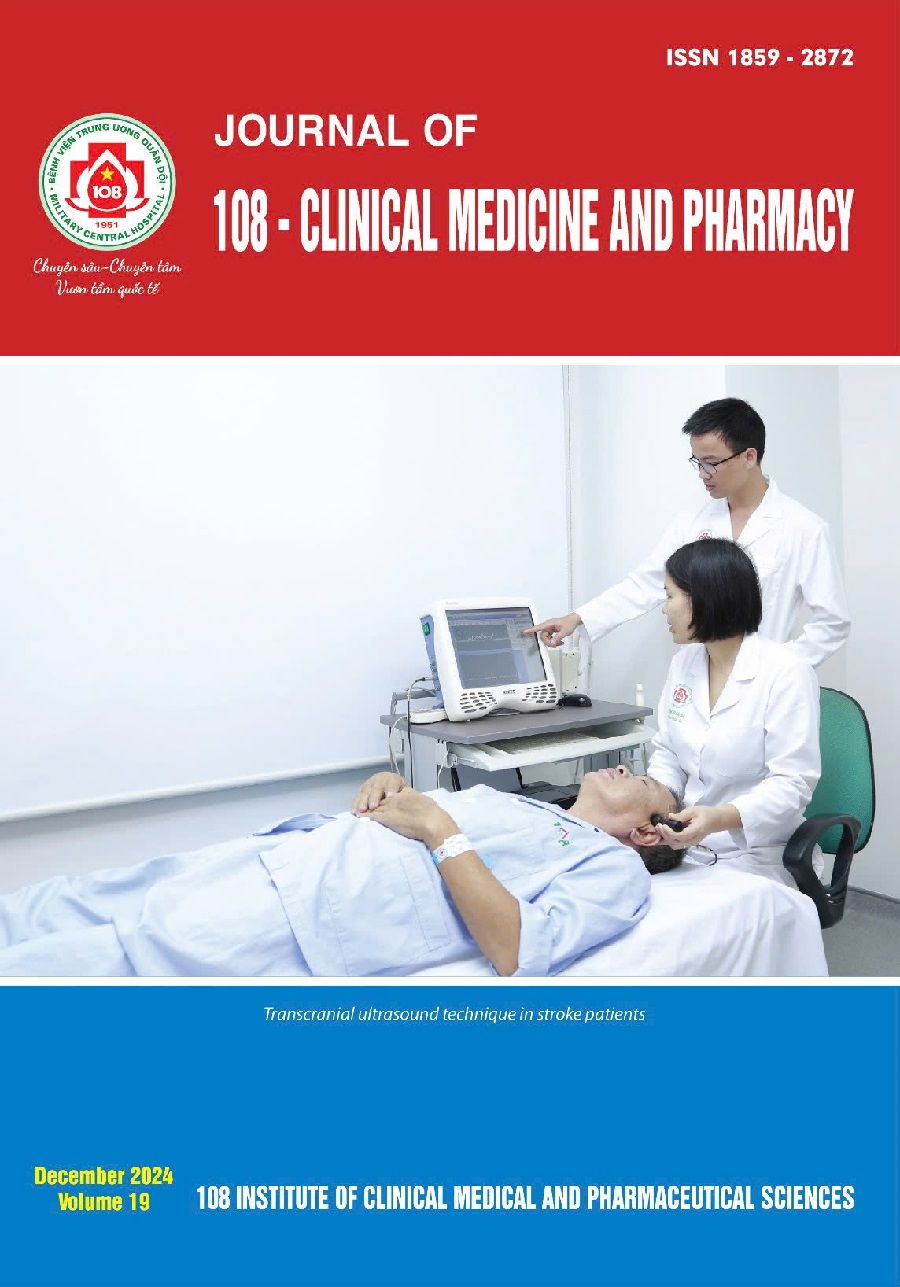Initial assessment of targeted temperature management with normothermia by surface cooling device effectiveness in neurological intensive care unit
Main Article Content
Keywords
Targeted temperature management, hemorrhage stroke, severe traumatic brain injury, refractory fever
Tóm tắt
Objective: To evaluate effects of targeted temperature management by surface cooling device in patients suffering from acute brain injury with refractory fever. Subject and method: Patients of traumatic brain injury, intracerebral hemorrhage with refractory fever in the first 24 hours and without exclusion criteria. Result: They were successfully treated with surface cooling device with normothermia. Conclusion: Targeted temperature management by surface cooling device is effective to control refractory fever in patients suffering from hemorrhagic stroke, severe traumatic brain injury with refractory fever.
Article Details
Các tài liệu tham khảo
1. Andrews PJD, Verma V, Healy M et al (2018) Targeted temperature management in patients with intracerebral haemorrhage, subarachnoid haemorrhage, or acute ischaemic stroke: Consensus recommendations. Br J Anaesth 121(4): 768-775.
2. Bogossian EG, Taccone FS (2022) Fever management in acute brain injury. Curr Opin Crit Care 28(2): 130-137.
3. Choi HA, Ko SB, Presciutti M et al (2011) Prevention of shivering during therapeutic temperature modulation: the Columbia anti-shivering protocol. Neurocrit Care 14(3): 389-394.
4. Jun GS, Kim JG, Choi HY et al (2019) A comparison of intravascular and surface cooling devices for targeted temperature management after out-of-hospital cardiac arrest: A nationwide observational study. Medicine (Baltimore) 98(30): 16549.
5. Logan A, Sangkachand P, Funk M (2011) Optimal management of shivering during therapeutic hypothermia after cardiac arrest. Crit Care Nurse 31(6): 18-30.
6. Madden LK, Hill M, May TL et al (2017) The implementation of targeted temperature management: An evidence-based guideline from the neurocritical care society. Neurocrit Care 27(3): 468-487.
7. Oddo M, Frangos S, Maloney-Wilensky E et al (2010) Effect of shivering on brain tissue oxygenation during induced normothermia in patients with severe brain injury. Neurocrit Care 12(1): 10-16.
8. Puccio AM, Fischer MR, Jankowitz BT et al (2009) Induced normothermia attenuates intracranial hypertension and reduces fever burden after severe traumatic brain injury. Neurocrit Care 11(1): 82-87.
9. Yokobori S, Yokota H (2006) Targeted temperature management in traumatic brain injury. J intensive care 4: 28.
2. Bogossian EG, Taccone FS (2022) Fever management in acute brain injury. Curr Opin Crit Care 28(2): 130-137.
3. Choi HA, Ko SB, Presciutti M et al (2011) Prevention of shivering during therapeutic temperature modulation: the Columbia anti-shivering protocol. Neurocrit Care 14(3): 389-394.
4. Jun GS, Kim JG, Choi HY et al (2019) A comparison of intravascular and surface cooling devices for targeted temperature management after out-of-hospital cardiac arrest: A nationwide observational study. Medicine (Baltimore) 98(30): 16549.
5. Logan A, Sangkachand P, Funk M (2011) Optimal management of shivering during therapeutic hypothermia after cardiac arrest. Crit Care Nurse 31(6): 18-30.
6. Madden LK, Hill M, May TL et al (2017) The implementation of targeted temperature management: An evidence-based guideline from the neurocritical care society. Neurocrit Care 27(3): 468-487.
7. Oddo M, Frangos S, Maloney-Wilensky E et al (2010) Effect of shivering on brain tissue oxygenation during induced normothermia in patients with severe brain injury. Neurocrit Care 12(1): 10-16.
8. Puccio AM, Fischer MR, Jankowitz BT et al (2009) Induced normothermia attenuates intracranial hypertension and reduces fever burden after severe traumatic brain injury. Neurocrit Care 11(1): 82-87.
9. Yokobori S, Yokota H (2006) Targeted temperature management in traumatic brain injury. J intensive care 4: 28.
 ISSN: 1859 - 2872
ISSN: 1859 - 2872
